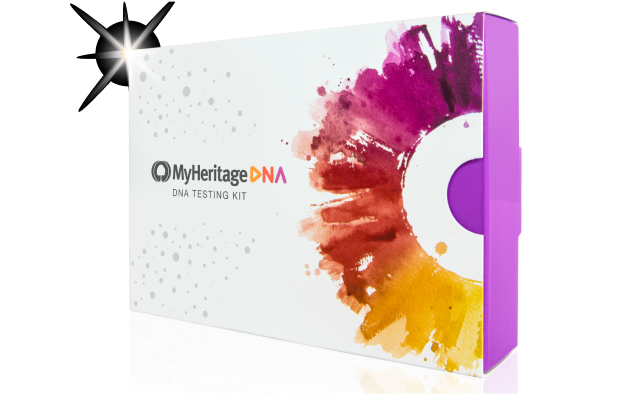Genealogists of all levels frequently encounter the scenario where a relative presents a box of family memorabilia, claiming it holds the family's history. While this can be a valuable resource, it also poses risks as it may contain misleading data that could distort current genealogical research.
Research your ancestors on MyHeritage
Developing an inherited research planDeveloping an inherited research plan
Genealogists must have a structured plan to integrate inherited information, ensuring accuracy and respect for contributions from other family members. Here’s how to effectively manage and incorporate inherited data, including notes and family stories:
- Conduct an inventory. Review and categorize the new information into groups such as photos, letters, and diaries.
- Track content. Log each data point and its source meticulously. For example: "Birth date for Gustave Henneberg is 6 July 1862 - source handwritten family tree by Edith Henneberg, dated 1975."
- Evaluate research content. Use standard evidence evaluation practices noting Source, Clarity, Information, and Evidence[1].
- Incorporate proven information. Add only valid and verifiable information to current research.
- Look at unproven information for possible clues. Use potentially unreliable data as clues for further research.
- Share information with others responsibly. Update online family trees or databases with proper source citations.
Evaluating research content: A step-by-step approachEvaluating research content: A step-by-step approach
Break down received information into distinct data points. For instance, if a typewritten family history from the 1970s provides a birth location for a great-grandfather, evaluate its source to determine its credibility compared to current, documented research.
Key evidence evaluation fieldsKey evidence evaluation fields
- Source Type:
- Original: The first recorded statement, photograph, or recording of an event.
- Derivative: Copies reproduced by hand, machine, or digitally.
- Clarity:
- Clear: Easily readable information.
- Marginal: Partially obscured information requiring interpretation.
- Information Type:
- Primary: Recorded by an eyewitness or official participant.
- Secondary: Supplied by someone not present at the event, potentially containing errors.
- Evidence Type:
- Direct: Explicitly stated facts.
- Indirect: Facts inferred from multiple pieces of evidence.
Collaborating with other researchersCollaborating with other researchers
Genealogists often encounter disagreements over common ancestors. Each researcher’s journey is unique, with varying levels of skills and documentation practices. Here’s how to navigate these collaborations:
Correcting informationCorrecting information
Understand that genealogy is filled with lore and emotions. Correcting information requires tact and respect.
- Understand the capabilities of the platform. When dealing with websites that display family trees or indexed and transcribed records, determine what can and what cannot be done using that platform. This may include having to read the Terms of Service agreement to understand who owns user data once it is uploaded.
- Ask and ask nicely. When dealing with other researchers online, a “virtual” smile goes a long way. Let the other person know about newly found information related to a specific person, place or event and ask if they would like the data for their own research. Also ask if they would be willing to update any online postings. This is not to prove that the new research is “correct” or “better,” but to help all genealogists who come upon the research in the future.
- Avoid “right” and “wrong” statements. The easiest way to alienate a fellow genealogist is to tell them that their research is wrong. Even if the research is incorrect, the goal should be to improve the current research and to help future researchers.
- If necessary, publish the new research. Sometimes the other genealogist can't be contacted, or they refuse to update their information. Remember that there are a variety of tools to make sure new research is just as visible as any other genealogist.
Attribution and creditAttribution and credit
Social media and educational initiatives highlight the importance of crediting researchers. Facts cannot be copyrighted, but narratives can. Here’s how to handle attribution:
- Contact the researcher, if possible. Discuss how their research will be used and credited.
- Building relationships. Foster connections with fellow researchers, especially when representing clients.
- Using Research Responsibly: Stick to facts and create original narratives if permission to use existing ones is denied.
- Addressing Attribution Issues: Advocate for proper credit, especially with new genealogists who may not understand the importance of attribution.
Tips and tricks for incorporating researchTips and tricks for incorporating research
- Inventory: Conduct a thorough review of inherited research materials, both paper and digital.
- Evaluation: Rigorously evaluate each data point using the Genealogical Proof Standard.
- Data Integration: Avoid direct imports into genealogy databases; always verify data before incorporation.
- Data Preservation: Digitize printed materials and back up digital files to ensure preservation.
- Responsible Sharing: Share findings responsibly, especially when involving living persons or narrative content, and always include source citations.
By following these guidelines, genealogists can effectively integrate inherited information, maintain the integrity of their research, and honor the contributions of family members and fellow researchers.
Explore more about how to incorporate family research done by others into your ownExplore more about how to incorporate family research done by others into your own
- Evidence Guidelines for Evaluating Genealogical Sources - Board for Certification of Genealogists (BCG)
- Genealogical Proof Standard - Board for Certification of Genealogists (BCG)
- QuickLesson 17: The Evidence Analysis Process Map - Evidence Explained
- The 3 Cs: Organizing Research Inherited from a Relative - MyHeritage
References
- ↑ Mills, Elizabeth Shown, QuickLesson 17: The Evidence Analysis Process Map, Evidence Explained (https://www.evidenceexplained.com/ accessed 17 July 2024).

